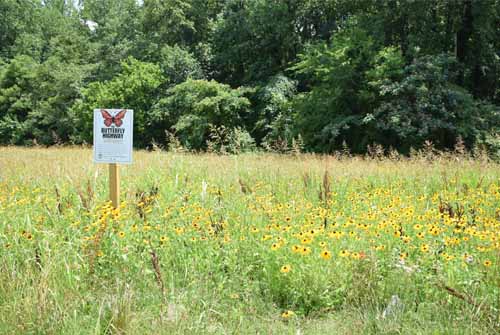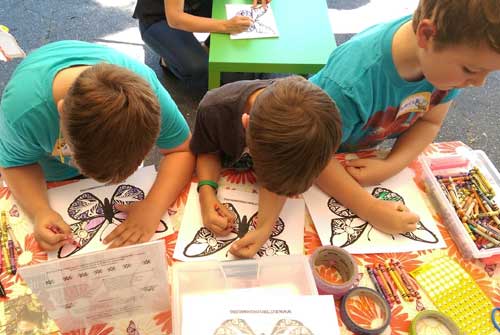 |
|
Angelique with Diogo Verissimo, co-chair of SCB's Conservation Marketing and Engagement Working Group. |
Angelique Hjarding is the recipient of the Conservation Marketing and Engagement Working Group's 'Brandy Award.' The Brandy Award recognizes unique contributions made in using marketing tools to increase public engagement and achieve conservation goals. Angelique accepted the award at SCB's North America Conference for Conservation Biology (NACCB) in July 2016. Angelique founded the Butterfly Highway project, a grassroots pollinator habitat program of the North Carolina Wildlife Federation. SCB asked Angelique a few questions about the Butterfly Highway and her work to restore pollinator populations.
Tell us about the Butterfly Highway project and how it began.
During my doctoral studies, I became interested in environmental justice issues in urban communities, particularly as it relates to distribution of natural amenities. I began working with neighborhoods in Charlotte, North Carolina, to study environmental justice impacts and noticed that there were very little native flowering plants in residential yards. Most yards only had grass lawns and ornamental shrubs that provided minimal food for wildlife. Around this same time there was a lot of public interest in declining monarch butterfly and managed honeybee populations. The Butterfly Highway was born out of this. The goal of the project was to increase native pollinator habitat in urban residential areas, while at the same time create an opportunity for asset-based community organizing. Every community group meeting I visited talked about neighborhood beautification, yet most of them lacked capacity to improve beautification. The Butterfly Highway helped the community with beautification while providing critical habitat for pollinators. My research investigates how a community based conservation intervention such as the Butterfly Highway can address community needs and biodiversity needs at the same time.
What sort of marketing tools or strategies did you use to spread awareness of the project?
One of the first things we did was work on branding the project. We had a simple logo that we used on everything including t-shirts, yard signs and stickers. Signage for the Butterfly Highway in the community was critical to promoting the project and getting early adopters on board. When neighborhood leaders had signs in their yards, other residents would ask them what the Butterfly Highway was and how they could participate. T-shirts were also an important part of branding the project. I had a lot of students participate in project and when they visited neighborhoods they were given Butterfly Highway t-shirts to wear. This helped community members identify students and their affiliation with the project.
When we launched the project with the North Carolina Wildlife Federation, we had a marketing firm that helped us update the logo and create new signage for the Butterfly Highway. These signs are available for purchase on the Butterfly Highway website.
Promoting the project through traditional media outlets as well as social media has been an important component of raising awareness about the Butterfly Highway. There have been several feature stories in local and regional newspapers and magazines. There is also a very active group on Facebook where members can ask questions, share photos and get information about local events related to pollinators.
 |
|
A Butterfly Highway site. |
What are some of the largest challenges the project has faced?
The biggest challenge has been the success of the project! There were more people interested in participating than we had capacity for. I received a grant from the National Fish and Wildlife Foundation to launch the project and through this we installed around 70 pollinator gardens in residential and public spaces. We could have easily done double that but were limited by time and funding.
Have you seen any results from the Butterfly Highway project?
The Butterfly Highway has been successful in creating a new opportunity for community members to engage in a community-based conservation initiative. For many participants, this was the first wildlife conservation project that they had ever been a part of and it sparked an interest in doing more for wildlife. There are now projects underway to create additional wildlife habitat enhancements in their neighborhoods such as adding bird nest boxes and promoting sustainable gardening practices. Participants in the project feel that the Butterfly Highway created an increased sense of community between other participants, within individual neighborhoods and the larger community of participants.
 |
|
Community engagement has been key to the project's success. |
Have there been any major surprises or barriers to the project that you were not expecting?
The biggest surprise is how much interest there has been in the Butterfly Highway on both a state and national level. It is always a hope that your research will have an impact and make a difference and now I can actually say it has!
What's next for the project?
The project launched statewide across North Carolina in February 2016 and we have seen it grow from 70 registered sites to over 1000. Several of the project participants have been working to form a chapter of the North Carolina Wildlife Federation that will continue to work on environmental justice and wildlife conservation issues in their community. This new group is called Community Alliance for Wildlife.